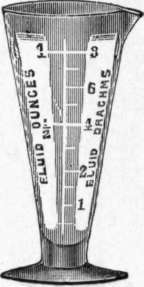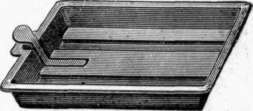Chemical Actions
Description
This section is from the "First Steps In Photography" book, by J. C. H. Wallsgrove. Also see Amazon: First Steps In Photography.
Chemical Actions
The reducing chemicals in the developing solutions vary in their action upon the haloid salts in the emulsion on the plate or film, and negatives of slightly different colours result.
Hydroquinone is a somewhat slow worker. It builds up density, giving plucky blackish negatives which yield strong prints. Its best accelerator is a caustic alkali, as soda caustic. It will work with the alkaline carbonates of soda and potash, but much more slowly. The solution above described will be found to be of a good working strength.
Metol works exactly opposite to Hydroquinone. It gives detail very quickly and density only very slowly. The unwary or inexperienced worker is sometimes trapped by it and transfers the plate to the fixing bath too soon, with the result that a thin, weak negative is produced; therefore, when working with Metol allow a sufficient length of time for density to form. Metol is, however, not often used alone, but more generally in combination with Hydroquinone, and the blending produces a very excellent working solution, embracing the strong characteristics of the two chemicals, namely, the density-giving properties of the one with the detailgiving properties of the other. The resulting negative is of a greyish-black colour. The alkaline carbonates of potash and soda are used as the accelerator, both for the Metol and also for the combination. The working strength of Metol will be found below.
Pyrogallic Acid is without doubt the best developer for plates and films, producing negatives of a greenish tint which give excellent prints. The working strength of the solution lies between two and four grains per ounce, according to the class of negative desired. The two-grain solution gives a negative that is soft, but full of detail, the four-grain solution gives one of stronger contrasts. A preservative for Pyro solution is potash metabisulphite - with this it will remain colourless for some time. Sodium carbonate is the accelerator, and twelve grains per ounce will be found a useful strength. Liquid ammonia is also sometimes used as the accelerator, but the carbonate is the one most frequently employed.
The three reducers above mentioned are those in most general use. The other reducers, with their accelerators, are given below, if the reader at any time should like to try them. The proportions have been reduced from the makers' formulae.
Grs. | Grs. | Oz. | |||
I. | Ortol ................ | 7 | Metabisulphite potash | 3 1/2 | Water 1 |
2. | Metol......... | 7 1/2 | Sulphite soda...... | 54.7 | ,, 1 |
3. | Eikonogen .... | 7 1/2 | " "......... | 29 | ,, 1 |
4. | Adurol........... | 8 1/2 | " "......... | 76 1/2 | ,, 1 |
5. | Glycin....... | 9 1/3 | " "......... | 431 | ,, 1 |
6. | Paramidophenol | 8 1/2 | (Use 1 part A and 2 of B) | ,, 1 | |
7. | Pyrocatechin . .... | 9 | ........... | ,, 1 | |
8. | Amidol | 2 1/2 | Soda sulphite..... | 22 | ,, 1 |
Grs. | Grs. | Oz. | |||
1. | Soda carb....... | 54 1/2 | Soda sulphite....... | 76 1/2 | Water 1 |
2. | " " ........ | 76 1/2 | Potass. bromide. . . . | 1 | " 1 |
3 | " " ......... | 23 | ......... | " 1 | |
4. | Potass. carb..... | 54 1/2 | ......... | " 1 | |
5. | " " ...... | 43 3/4 | ........ | " 1 | |
6. | " " ....... | 26 1/2 | Soda sulphite....... | 26 1/2 | " 1 |
7. | Soda carb....... | 44 | " " .......... | 22 | " 1 |
Amidol works without a caustic alkali or an alkaline carbonate, the sulphite being sufficient for the purpose.
A few words about weights and measures may be helpful. Chemicals are bought by the avoirdupois weight of 437 1/2 grains to the ounce. One fluid ounce of distilled water at mean temperature of the atmosphere (i.e. 60 deg. Fahr.) weighs 437 1/2 grains; 60 minims equal 1 fluid drachm; 8 drachms 1 fluid ounce, and 20 fluid ounces 1 pint. One minim weighs practically nine-tenths of a grain. A ten per cent solution by weight is made by counterbalancing a wide-mouth bottle on a scale; weigh into it one ounce of the required substance and nine ounces of water.
The solutions must be carefully compounded. If the worker cannot do this it should be done by a capable person, or the ingredients obtained in a form in which they are carefully weighed out and merely require the addition of water.
Development
Development Of Plates
The reader will now have a general idea of the nature of the developing solutions. The next thing to consider is the development of the exposed plate, which is done in the red light of the closed-up dark-room. The solutions A and B are first mixed in a graduated measure, as in Fig. 37. The plate is taken from the dark-slide and carefully dusted with a piece of soft silk, or a tuft of cotton-wool, to remove any dust. Place it coated side upwards in a developing dish, as Fig. 38. The dish should be held in the left hand and the measure in the right, with the lip of the spout resting on the edge at the right end of the dish. With a sweeping motion flood the solution evenly over the plate as the measure is passed along the dish; now gently rock the dish to keep the solution moving.

Fig. 37.

Fig. 38.
It will be noticed that the plate when taken from the dark-slide is exactly of the same appearance as when it was put in and as if nothing had happened; but something has happened: the image is, however, latent or invisible, and requires to be brought out by the developing solutions. As soon as the solution comes in contact with the plate it commences to act upon the silver compounds - which have been affected by the light - in proportion to the light's action. The "High-lights," these are the brightest portions of the subject, as clouds or white objects, make their appearance first, next come the "Half-tints," and lastly the "Darks" or shadow portions. The shadows will appear in the finished negative as nearly clear glass; owing to the light's action having been very weak the emulsion may be very slightly affected and will dissolve away in the fixing bath.
Tentative Development
It is a somewhat critical operation to make up one's mind just when to stop development. If the plate is kept in too long it will be over-dense, if not long enough a thin negative will result. Much depends upon what exposure the plate has had. If the exposure has been about correct, development is carried on without hesitation, but if there be any doubt it is advisable to start with 2 parts of A and 1 part of B. This is called "Tentative" development.
In a correctly exposed plate the image begins to make its appearance gradually all over the plate. Such being the case, pour the developer back into the measure and add the other part of B; return to the dish and gently rock to and fro; the image will then gather density. The plate should from time to time be taken from the dish, and its back examined; when the image can be fairly well seen at the back it has been developed long enough; the plate should then be rinsed and placed in the fixing bath.
Continue to:


